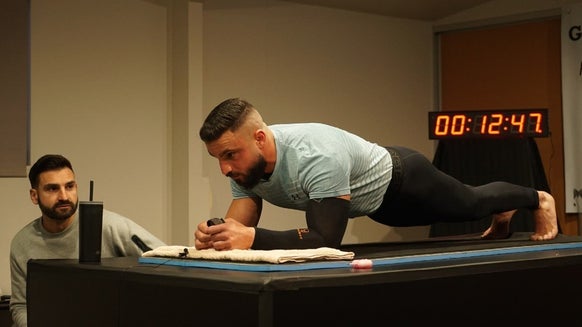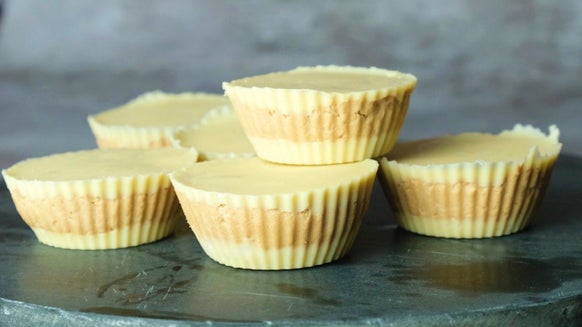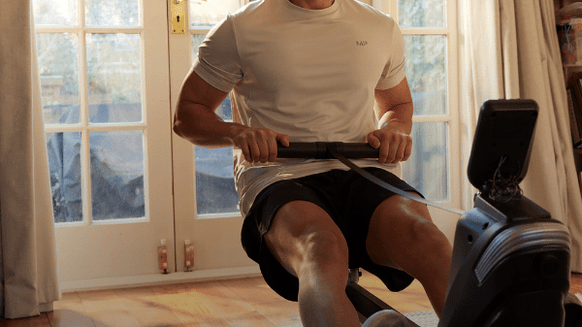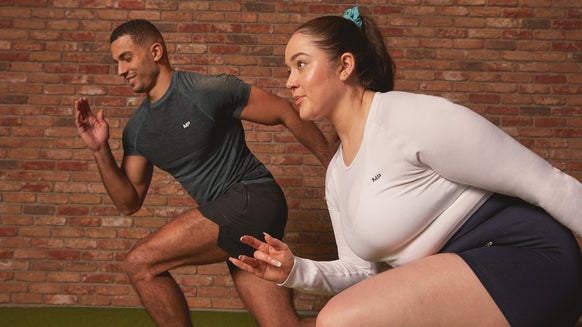How to perform the lying leg curl:
- Adjust the shin pad so that it makes contact with your achilles tendon, just below the calves and above the ankle joint. Lie prone on the machine and hold on to the handles to secure your upper body
- Once in position, flex only at the knee so that your heel is pulled back towards your glutes. Contract as far as you can go (likely to be once you meet soft-tissue opposition with the pad meeting your hamstrings/glutes)
- Slowly lower back to the starting position under control before starting the next rep
Lying Leg Curl Benefits
Uses multiple muscle groups
It's ideal for developing strength and hypertrophy
It can help to address muscular imbalances
If you weightlift often or if you enjoy movements such as squats, then you may have more developed quadriceps relative to your hamstrings. This can lead to painful injuries. Using the leg curl can help to specifically develop the strength and work capacity of your hamstrings, helping to balance out the strength ratio between the posterior and anterior chain.
It’s ideal when managing injuries
If you are dealing with an injury that limits your ability to perform other exercises— for instance, lower back pain may affect your ability to perform a deadlift— then this exercise is a good way to ensure your hamstrings still receive significant training stimuli. This can help to limit any muscle loss occurred while taking a break from large compounds such as deadlifts. Additionally, the leg curl can offer a safe and controlled way to load the hamstrings during the later stages of rehabilitation from a hamstring strain.
It can contribute to athletic development
Many sports rely on legs to produce muscular power. The hamstrings play a pivotal role in this, as they produce a lot of power for knee flexion and hip extension — both vitally important for running. Strengthening the hamstrings with an isolation exercise such as the leg curl can help athletic performance in other sports.
Other Variations of Leg Curls
Whether you’re working around an injury or looking for other ways to progressively overload this movement, there are plenty of variations to choose from.
Standing Leg Curl
Essentially the same as the lying leg curl, but with slightly less hip flexion involved, meaning the hamstrings are worked in a slightly different way. This exercise is also performed unilaterally, as the opposite leg supports you to stay standing.
- Set the pad height to be in contact with your achilles tendon on the working leg
- Use your non-working leg to support your while you flex the heel of your working leg up towards your glutes
- Squeeze your hamstrings at the top, before returning to the start position in a controlled manner
Standing Leg Curl With Resistance Band
This is performed in the same way as the standing leg curl, but you can perform this variation anywhere you can take a resistance band.
- Stand facing the anchor point for the resistance band — this can be a squat rack or even a table. Anchor the resistance band to a fixed object, then step into the resistance band loop with your working leg only
- Step slightly away from the anchor point until the band is slightly taut, with the contact point again on your achilles tendon area
- Flex your heel up towards your glutes (you may only be able to make it to 90 degrees before the band slips) before returning to the start position in a controlled manner before starting your next rep
Prone Leg Curl With Resistance Band
When performing the standing leg curl, it might be difficult to effectively load the end range (closest to the glutes) of the exercise. The prone lying variation helps to bridge that gap.
- Anchor the resistance band to an anchor point, then loop the ankle of the working leg through it
- Lying prone on the floor, flex your knee to around 90 degrees — the resistance band should be slightly taut in this starting position
- Flex your knee to bring your heel to your glutes, before returning to the starting position in a controlled manner, then start the next rep
Seated Leg Curl
This variation places the greatest stretch on the hamstrings in the starting position, as the hip is flexed to around 90 degrees or more with the knee fully extended. It would definitely be beneficial to try this variation as well as the lying leg curl, as they both load the hamstrings at different lengths.
- Sit in the machine, with the thigh pad in contact with your quads, just above your knee. Ensure the shin pad is adjusted to be in contact with the achilles tendon
- Flex your heel towards your glutes before returning to the starting position in a controlled manner, then start the next rep
Nordic Hamstring Curl
This variation relies on overloading the eccentric portion of the leg curl. Research has shown this increases strength and fascicle length — both are key to protecting the hamstrings from injury during high eccentric loading (such as sprinting).
- Start in a kneeling position — you’ll need something soft to put your knees on, such as a folded-up yoga mat. You will also need an anchor point — ideally a friend who is heavy enough to offset your weight as they will need to hold your ankles down. Before starting the rep, ensure your hips are also in a neutral/extended position
- Maintaining a rigid torso and a straight line from the shoulder to the knee, slowly lower your torso towards the floor in front of you, using your hamstrings as ‘brakes’. Do this as far as you can before your hamstrings give way (and make sure to break the fall with your arms in front of you in a press-up position)
- Either powerfully push yourself back up to the start position using your arms, or use your hamstrings to perform the concentric portion of the exercise (if you can do that, chances are you’re not a beginner!). You’ll now be back in the starting position ready for the next rep
Common Mistakes and How to Fix Them
Using Inappropriate Loads
Using loads that are too heavy can result in you performing the exercise with incorrect technique, while using loads that are too light won’t build strength or muscle. . With the correct load, you’ll be able to perform every rep with the correct form d and to failure (ie be physically unable to contract the muscle) within the desired rep range.
Incorrect Leg Placement
Incorrect pad placement can lead to the exercise being performed less effectively, as range of movement can also be limited, thus restricting the range of movement through which the muscle is loaded.
Rushing Reps
Rushing the eccentric phase mitigates the time under tension (TUT), a driving factor for muscle growth. Subsequently, this will limit the amount of training adaptations made, so ensuring you control the full rep is essential when you’re trying to make the desired training adaptations.
Take home message
The lying leg curl is a great exercise for directly stimulating the hamstrings, ultimately leading to a more rounded physique and improved athleticism. Make sure this exercise is a must-do every leg day.
READ MORE HERE:








